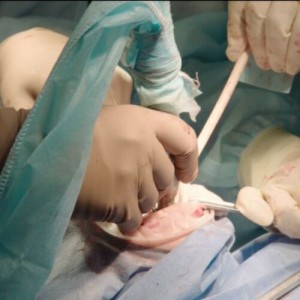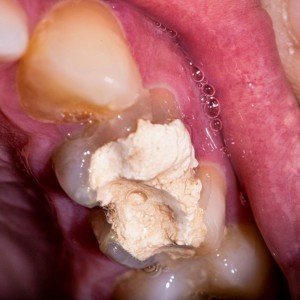
Sedation in pediatric dentistry: which agent shall we chose?
Alessandra Abbà
Many dental procedures can be performed with local anesthesia. Nonetheless in certain clinical situation and especially with pediatric patients it can be useful to associate local anesthesia with the administration of sedative agents in order to promote favorable operating conditions. The level of sedation required must be evaluated individually to achieve the right balance between the operator needs and the safety of the procedure. Inhalation sedation with nitrous oxide-oxygen sedation is a method for conscious sedation. This technique has nearly all the characteristics of an ideal analgesic agent: safe and noninvasive delivery, lack of serious side effects, simplicity of use, a rapis onset and offset of action. Triclofos sodium is a commonly used sedative drug used for oral sedation but there is scarce literature to substantiate its use and effectiveness in pediatric oral sedation.
In this study published on Journal of Indian Society of Pedodontics and Preventive Dentistry in 2017, the authors want to evaluate the efficacy of nitrous oxide-oxygen and triclofos sodium as conscious sedative agents in 5-10-year-old children.
MATERIALS AND METHODS
Ninety-three children aged 5-10 years showing anxious and uncooperative behavior were selected for the study. Among the patients screened, only sixty requiring extractions, restorations, and endodontic treatment were selected for the study. Physical evaluation and preanesthetic evaluation were carried out by a pediatrician and an anesthesiologist, respectively. The sedative agents were administered by the anesthesiologist. Patients were randomly divided and assigned into two groups. Group A received 40% nitrous oxide-60% oxygen. The level of 40% nitrous oxide was maintained throughout the dental procedure and at the end of the treatment, 100% oxygen was administered for at least 3–5 min before removing the nasal mask. Group B received triclofos sodium in the dose of 70 mg/kg body weight, given 30 min before the treatment procedure. For both the groups, ventilator frequency, pulse, and oxygen saturation were recorded at baseline and during the entire procedure at 5 min interval for 30–45 min. During the whole treatment procedure, the child's response was recorded using the first three categories of the Houpt's behavior rating scale for sleep, body movement and crying. The acceptance of route of drug administration by the patient and parent was also assessed. Data obtained were statistically evaluated using the Mann-Whitney U-test and Chi-square test.
RESULTS
Children sedated with triclofos sodium were significantly more sleepy and disoriented compared to those sedated with nitrous oxide, with mean values of 3.73 ± 0.52 and 4.00 ± 0.00, respectively, which was significantly different (P = 0.005). The overall behavior of children in both the groups was similar. Good parental acceptance was observed for both the routes of administration. Parent of only one child showed poor acceptance of the route of administration in Group A, while 100% acceptance was observed among parents from Group B. Patients accepted the oral route significantly better than inhalation route (73.33% of acceptance in Group A and 100% for Group B) with a statistically significant difference between the groups (P = 0.002). (table 1)
CONCLUSION
Both nitrous oxide-oxygen and triclofos sodium were observed to be effective sedative agents, for successful and safe use in 5-10-year-old dental patients. Nonetheless children seemed to prefer the oral route compared to the inhalation route for sedation whereas parental acceptance for both routes was good.
For additional informations:
Evaluation of nitrous oxide-oxygen and triclofos sodium as conscious sedative agents
 Related articles
Related articles
Pediatric dentistry 09 October 2025
Smart materials in pediatric dentistry: Revolutionizing care for enhanced outcomes
In the realm of pediatric dentistry, smart materials are reshaping conventional approaches, introducing a responsive and tailored dimension to treatment.
Pediatric dentistry 24 September 2025
The objective of this study was to survey members of the American Academy of Pediatric Dentistry (AAPD) regarding their use of behavior management techniques.
Pediatric dentistry 08 August 2025
Management of pigmented gingiva in child patient: a new era to the pediatric dentistry
Gingival health in the form of size, shape, consistency and appearance are essential components responsible for an attractive smile as well as may cause unpleasant appearance
Pediatric dentistry 17 July 2025
Pediatric restorative dentistry is a dynamic combination of ever-improving materials and tried-and-true techniques.
 Read more
Read more
Much like EMTs rushing to the scene after an accident, stem cells hurry to the site of a skull fracture to start mending the damage. A new finding has uncovered the signaling mechanism that triggers...
Products 05 November 2025
SimplyTest has launched a groundbreaking saliva-based test to detect high-risk strains of oral human papillomavirus (HPV), a major cause of oropharyngeal cancers.
News 05 November 2025
Perimetrics, Inc., a dental technology company pioneering quantitative diagnostics, announced today that the U.S. Food and Drug Administration (FDA) has granted clearance for the InnerView...
News 05 November 2025
On October 15, open enrollment for Medicare began nationwide. Hundreds of thousands of seniors in New Jersey will once again face the challenge of finding the right Medicare coverage, including the...
Digital Dentistry 04 November 2025
Digitalisation is an expanding field in dentistry and implementation of digital teaching methods in dental education is an essential part of modern education.
















